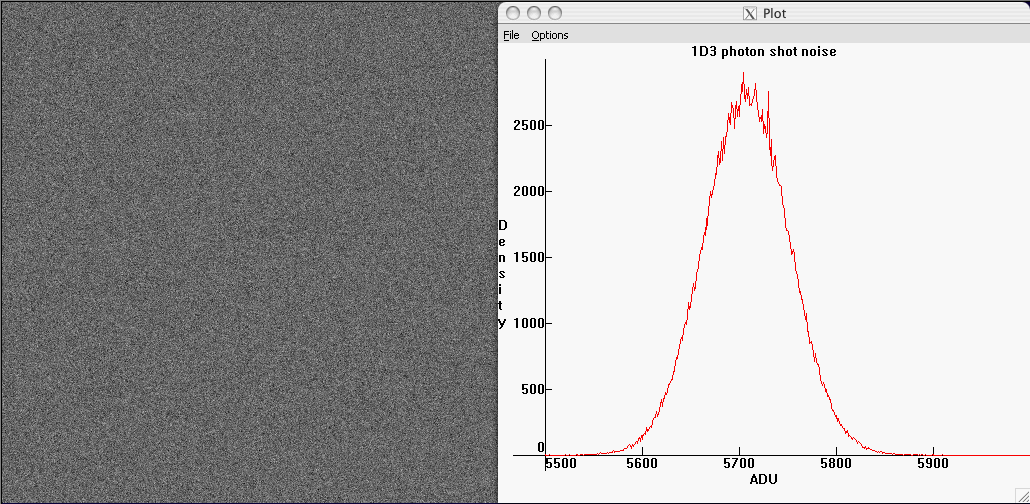Ysarex
Been spending a lot of time on here!
- Joined
- Nov 27, 2011
- Messages
- 7,475
- Reaction score
- 4,298
- Location
- St. Louis
- Can others edit my Photos
- Photos OK to edit
The light on each pixel is not the same. The light is noisy and the pixels record that. Shot noise is in the light. Most of what we see in our photos as noise is shot noise.OK Got it. But do you know why that happens. If the light on each pixel is the same, what's causing the "visable" noise overall?
It's in the signal. The noise is in the light. It's not in the pixels. The pixels aren't causing it. Nothing electronically connected to or part of the pixels is causing the dominant noise we see in photos. It's not about the pixels.Is it in the amploifiers, the assembly, or what?
reference Bill Claff: Noise, Dynamic Range and Bit Depth in Digital SLRs
"Photon shot noise: Light is made up of discrete bundles of energy called photons -- the more intense the light, the higher the number of photons per second that illuminate the scene. The stream of photons will have an average flux (number per second) that arrive at a given area of the sensor; also, there will be fluctuations around that average. The statistical laws which govern these fluctuations are called Poisson statistics and are rather universal, encountered in diverse circumstances. For details and a variety of examples, see this Wikipedia article. The fluctuations in photon counts is visible in images as noise -- Poisson noise, also called photon shot noise; an example is shown in Fig. 1. The term "shot noise" arises from an analogy of the discrete photons that make up a stream of light, to the tiny pellets that compose the stream of buckshot fired from a shotgun (in particular, "shot" does not mean "photographic image").

Fig.1 - Photon shot noise in an image of the sky from a Canon 1D3 (in the green channel). In the histogram at right, the horizontal coordinate is the raw level (raw units are sometimes called analog-to-digital units ADU or data numbers DN), the vertical axis plots the number of pixels in the sample having that raw level. The photon noise was isolated by taking the difference of two successive images; the raw values for any one pixel then differ only by the fluctuations in the photon count due to Poisson statistics (apart from a much smaller contribution from read noise).
The noise histogram is essentially a Gaussian distribution -- a standard "bell curve". The standard deviation of this bell curve is the width of the bell. Fluctuations in photon counts from pixel to pixel are completely uncorrelated; in terms of its spatial variation, photon shot noise is white noise (in other words, it has equal strength at all spatial frequencies); this means that it has a uniform salt-and-pepper appearance with no structure or pattern.An important characteristic of fluctuations obeying Poisson statistics is that their standard deviation -- the typical fluctuation away from the average in the typical count -- is equal to the square root of the average count itself. That is, if 10000 photons are collected on average, the typical fluctuation away from this average number of photons will be about 100 -- the counts will typically range from about 9900 to 10100. If instead on average 100 photons are collected, the variation from count to count will be +/- 10. Thus, as the signal grows, the photon shot noise also grows, but more slowly; and the signal-to-noise ratio increases as the square root of the number of photons collected. The higher the illumination, the less apparent the shot noise; the lower the illumination, the more apparent it is."
What do you mean "visable" noise as opposed to what other kind?


![[No title]](/data/xfmg/thumbnail/32/32930-09414fc020c2a60a456ff59a05c5ef8f.jpg?1734162706)
![[No title]](/data/xfmg/thumbnail/36/36401-dfb1077e5917eb47c5acf9c208e7be2a.jpg?1734168787)








